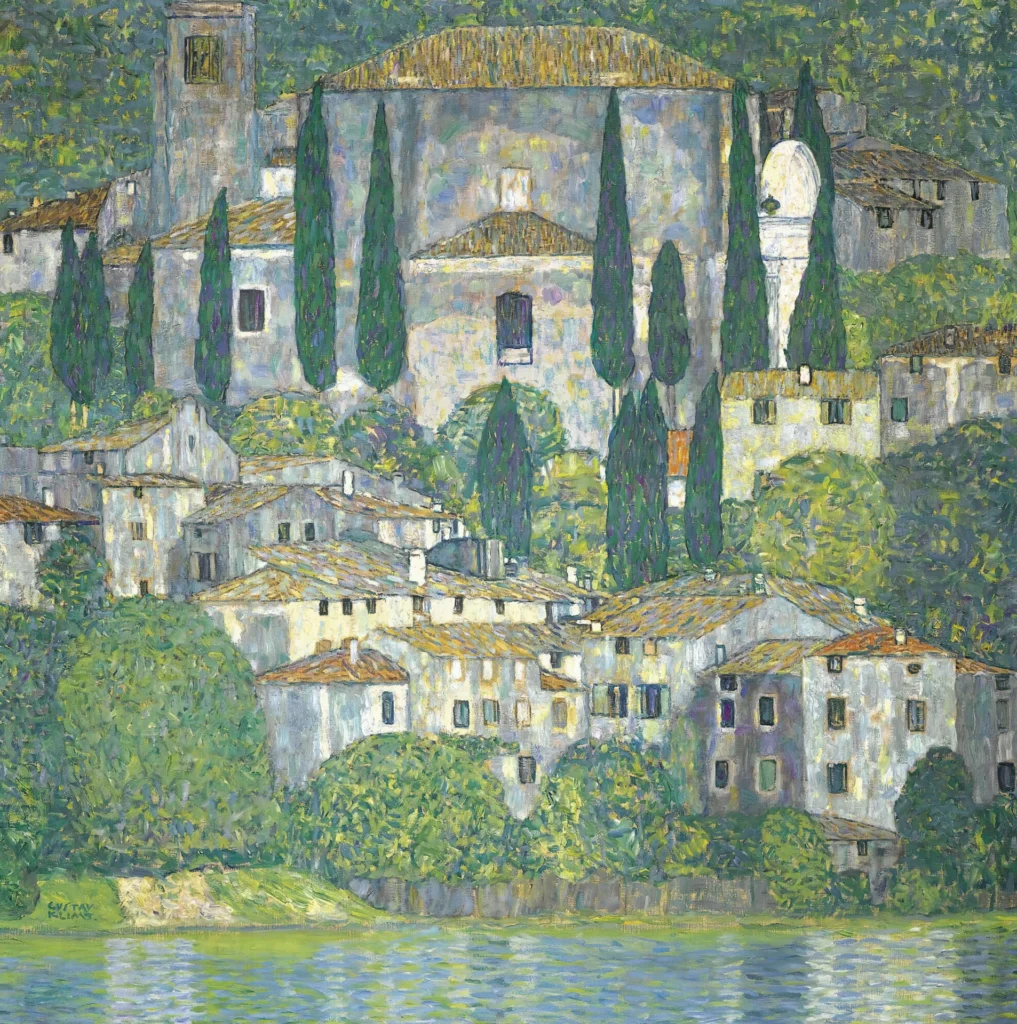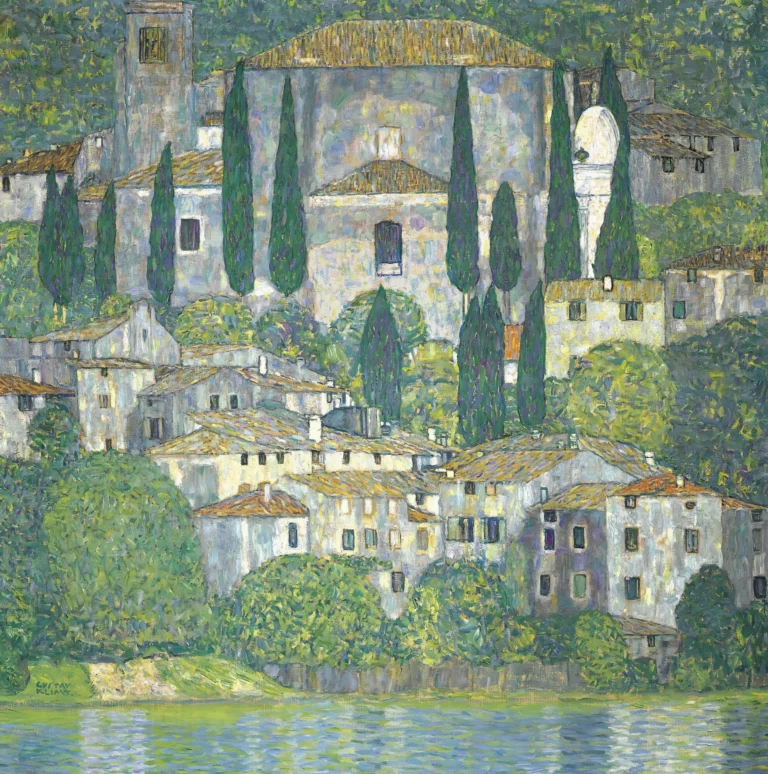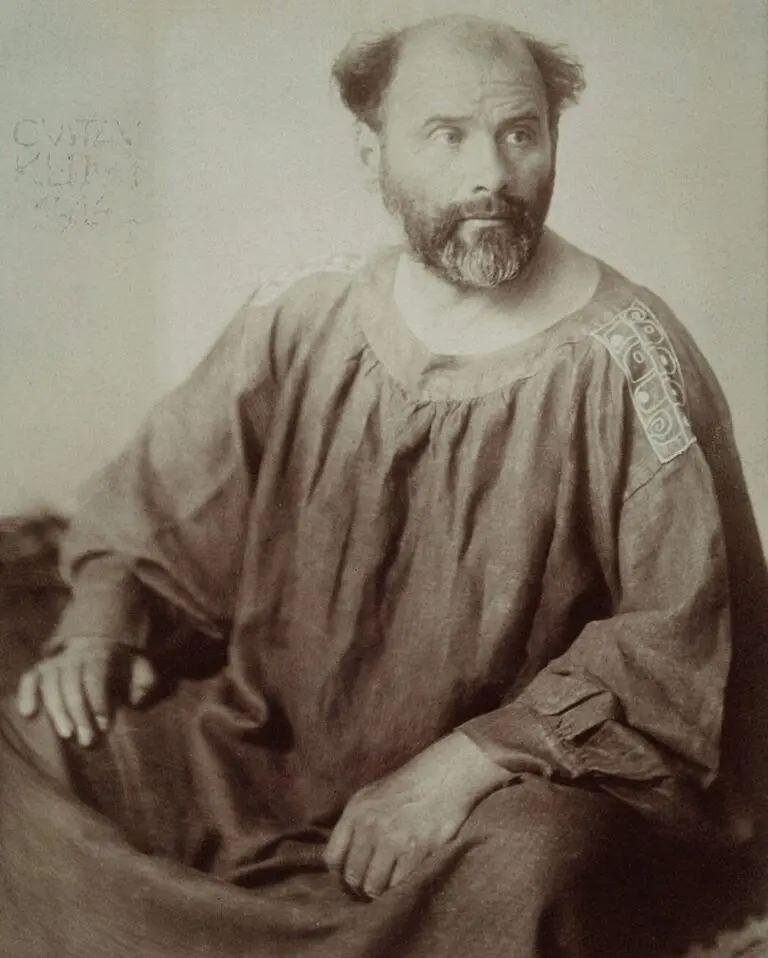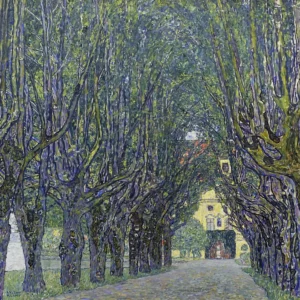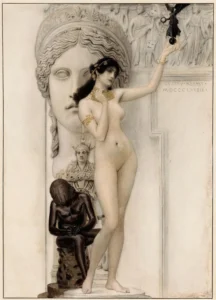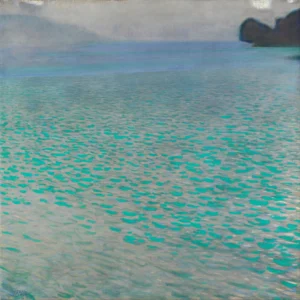Church In Cassone – Landscape With Cypresses
In Church In Cassone – Landscape With Cypresses. created during his visit to Italy in 1913, Gustav Klimt captures the picturesque charm of the village of Cassone along Lake Garda. The composition features lush greenery, quaint houses, and the prominent octagonal church, all harmoniously integrated within an innovative surface-oriented technique. Klimt's fascination with patterns is evident, creating a shimmering tapestry-like effect that ties together the natural and architectural elements. This painting is a rare gem in Klimt's landscape repertoire, marking a unique moment in his artistic journey.
Year 1913
About the Artwork
Gustav Klimt created 'Church in Cassone' during a visit to Lake Garda in Italy, where he was deeply inspired by the landscape’s natural beauty and historical architecture. The painting vividly illustrates the village of Cassone, with its distinctive octagonal church, nestled amongst cypresses and houses descending to the lake. Klimt's innovative approach included the possible use of optical aids to enhance perspective, while his connection to the Wiener Werkstätte is evident in the decoration and surface patterning inspired by folk art techniques. This work stands out as Klimt’s only known depiction of this enchanting locale, making it a quintessential example of his skilled melding of nature and architecture.
Did You Know
‘Church in Cassone’ is the only remaining work by Klimt that depicts the architecture and beauty of Lake Garda, as many of his other landscape pieces, like ‘Malcesine am Gardasee’, have unfortunately been lost.
Klimt may have used an optical aid, such as a telescope, to achieve the unique perspectives and intricate details in ‘Church in Cassone’, showcasing his commitment to innovation in his artistic process.
‘Church in Cassone’ has a rich history, having been acquired by notable collectors shortly after its completion and passing through esteemed galleries, attesting to its significance in the art world.




